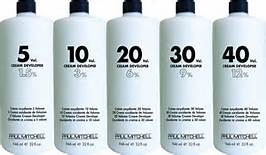Many
people try to highlight their hair at home, then become horrified when they see
"orange!"
This blog will help you understand the facts on how to neutralize
the orange!
While I
attended beauty school, Mrs. Caldwell's favorite saying was:
"Know the basics! Everything we do in
cosmetology
will bring us back to the basics."
For me, hair coloring was the hardest subject to
learn in beauty school. It was not until I had my own salon and started to
experiment with Matrix SoColor that the color wheel and the basic knowledge, I acquired
about color, came to life for me. In this blog I want to share some basics of
the color wheel and the levels hair goes through when lightening the hair,
and how you can neutralize the "orange" that can emerge.
1. Know the Color
Wheel and the contrasting colors !
In
hair coloring,
to have success in the final results, the most important thing to know is
the color wheel.
Hair
has under-lying tones (mostly red shades) the color opposite on the color
wheel will tone out the unwanted tone. Green
Neutralizes red, Blue neutralizes orange
and violet neutralizes yellow.
There are ten levels to the natural
hair colors.
Red tones in the hair
are the hardest color to lighten out of the hair and the hardest to
stay in. As you can see in the chart above red covers 80% of the chart, stating
with the dark brown up to the orange, but does not stop there. YES...... When
you are dealing with hair, there may be under-lying tones of red
(very small amount) that will reach up to the yellow/gold level. That is where
people don't realize there is still a small amount of red that needs taken
out by highlighting more or neutralized.
When highlighting hair
there are two things that are vital to the results.
1.
Is the hair Virgin--
never colored?
2.
Is the hair previously
colored?
Highlighting virgin hair is different from highlighting already colored hair.
Artificially colored
hair has a coating, whatever color was put into the hair. IT takes more
time and a higher volume of processor to lighten already colored hair.
4. Know What Product
You Will Use!
Different manufacturer,
such as Paul Mitchell, Wella,
Redken, (for licensed professional) or
Salon Care which can be purchased from Sally's beauty supply, for the non-licensed
person. use there own developers with their highlighters, but the use is
basically the same to lift the color out of the hair shaft.
5-10 Volume Peroxide The energy or strength of this developer is used for
semi-permanent, no-lift hair color. Designed for deposit only. If you want to
add a tint or color tone to hair of the same lightness level, it has enough
strength to open the cuticle layer of the hair allowing the color molecules to
penetrate and color to be deposited in the cortex.
20 Volume Peroxide The energy or strength of this developer commonly used with
permanent hair color and opens the hair cuticle like 10 Volume, but also offers
lifting of the hair's level by 1-to-2 levels. 20 Volume Peroxide is used to
best effect when the hairs starting level is no more than one shade darker than
the color you are trying to achieve.
30 Volume Peroxide When highlighting hair, the energy or strength of this
developer works just like 20 Volume except that it will lift the hair's
starting color by 2-to-3 levels and works best when the target color is no more
than two levels lighter than the starting color
40-50 Volume Peroxide The energy or strength of this developer is designed to
lift 4-5 levels when highlighting.
It's important to remember that the
stronger the developer is, the harsher it can be on your hair.
You should always use a moisturizing
conditioner after applying a stronger hair color.
5. Just Do It!
The best way to see how all of this works is to experiment and
do it. If you are not a student of cosmetology, you can purchase an all-natural-hair manikin head online and
experiment like they do in beauty school.
Try using the different
levels of developer on small subsections of the head until you feel comfortable
trying it on yourself or someone else. |
| My granddaughter's "Color ART" |










I really enjoyed reading your blog on hair tips. I look forward to reading more of your posts.
ReplyDeleteI'm glad I can be of some help. Thank you
DeleteReading your post helped me understand my hairtype
ReplyDeleteI do not plan on dying my hair any time soon but I feel very informed and educated on the art of hair coloring after reading this. Maybe I will teach my girlfriend a thing or two now when she goes to dye her hair.
ReplyDeleteThanks for your interest, please show the blog to your girlfriend. She may have an idea of interest that I can help her with.
DeleteThis photo is what most people who have dyed hair are trying to achieve when they are trying to remove that brassiness. I struggle with orange and yellow anytime I dye my hair and I found the color wheel information you have listed here to be helpful. I will have to keep that in mind for my next attempt at removing the orange out of my own hair. It is a real problem for me. Thanks for the help!
ReplyDeleteAlready colored hair leave an underlying deposit of tone from the color that was applied, its harder to remove. Most times the hair needs a double highlighting process or a higher level of developer. If the share of orange is deep you will need an ash tone(green) to neutralize the "orange".
DeleteThank you!
DeleteMarvelous..simply Marvelous!!
ReplyDeleteHairstyles for women over 50
ReplyDeleteThank you for this informative blog. I think that Lori has a fabulous idea and I would like to see hairstyles for women over 50 as well!
ReplyDeleteThank you for your interest Lori and Hollie. I'll see what I can do for hairstyles over 50.
DeleteWonderful blog I have had a number of mishaps when coloring my hair thanks for the info
ReplyDeleteThanks Chris, I'm glad this info was of help to you.
DeleteHi, I have another question... so after you have corrected the orange by using ash and have achieved the color you wanted EXCEPT for the roots... What do you do to correct the new growth of the roots orange color now that the rest of the hair has already been successfully corrected? Do you re-die just the roots? Please help me with this issue. Thank you.
ReplyDeleteYes Kelly, if you want to keep the existing color you just created; you need to touch up the roots only. With your new knowledge of knowing what your base color is, you would choose to use a color that already contains the correction color in its base. For example there is a natural medium blonde, or an ash medium blonde. Different brands have different names and titles using numbers and letters. Example 7PN,8A etc.
DeleteOh, I do also want to know.. What exactly is toner? I never understand. Hairdressers in the past have said you just need to use a toner and it will take the orange out, but what is a toner and what does that mean? So do you purchase something called "TONER" or is the color you are applying a toner? Or is it something you add to the color? I have never understood what it is and how it works.
ReplyDelete